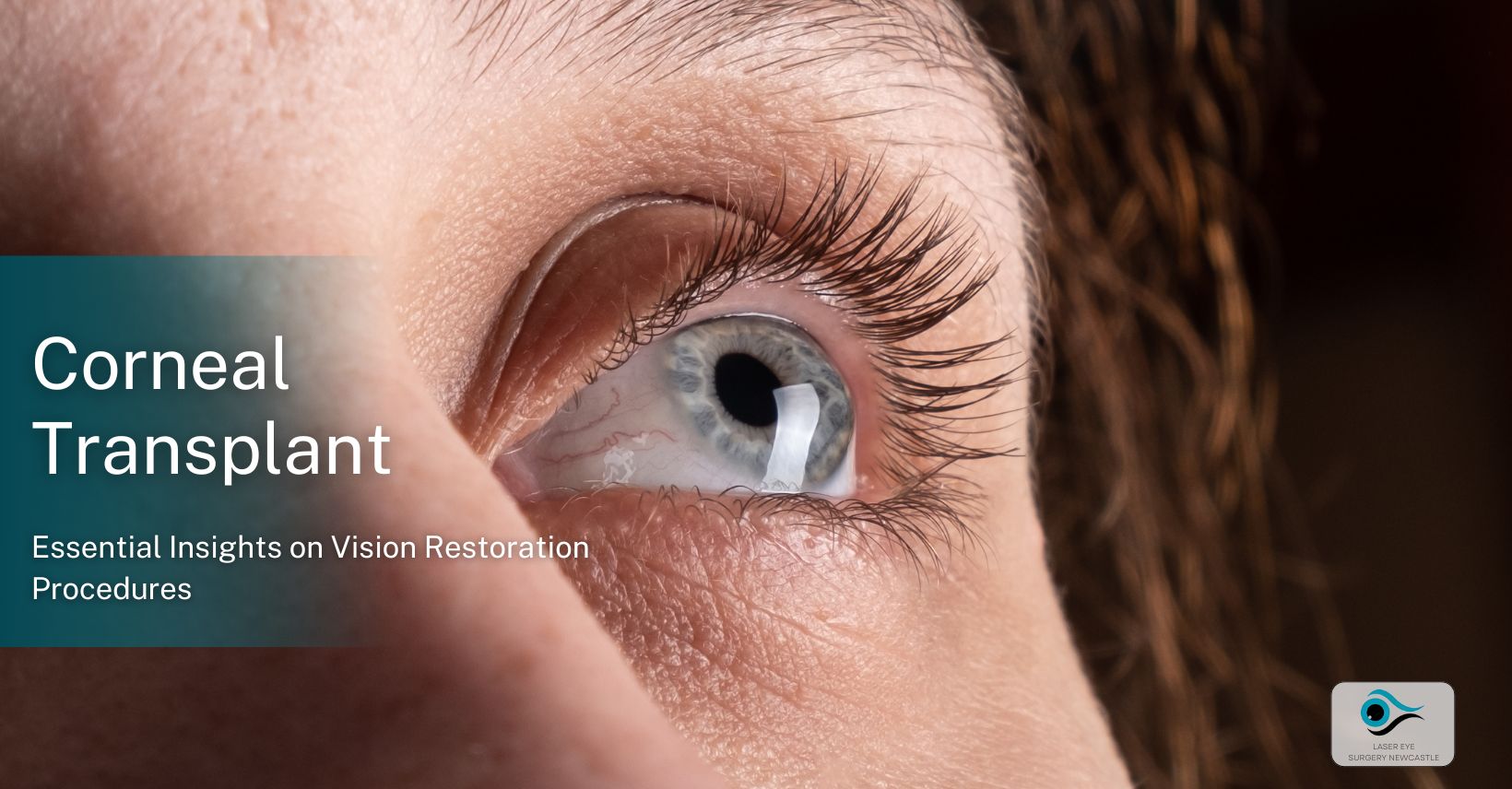Curious about corneal transplants and how they restore vision?
This article offers essential insights into this life-changing procedure.
We cover everything you need to know, from understanding why a corneal transplant may be needed to learning about the different types of procedures and risks involved.
Whether you are considering a corneal transplant or simply want to learn more about this vision restoration option, this article will guide you through the process from start to finish.
What Is a Corneal Transplant?
A corneal transplant is a surgical procedure where the damaged or diseased layers of the cornea are replaced with healthy corneal tissue from a donor.
This intricate surgery involves several steps to ensure the success of the transplant. The first step is a thorough evaluation of the patient’s eye condition to determine the extent of damage and the suitability for a transplant. Once the patient is deemed fit for the surgery, the damaged layers of the cornea are carefully removed. Depending on the precise condition, different types of layers, such as the epithelium, Bowman’s layer, stroma, and endothelium, may be affected.
The primary objective of corneal transplant surgery is to restore clear vision, relieve discomfort, and enhance the eye’s appearance by replacing damaged tissue with healthy donor tissue. This procedure significantly improves visual clarity and patient quality of life. These benefits underscore the necessity of understanding when such a surgical intervention becomes essential, leading us directly into why a corneal transplant is needed.
Why Is a Corneal Transplant Needed?
A corneal transplant is often necessary to address various diseases and conditions that impair the cornea, leading to substantial vision loss and a diminished quality of life. This surgical intervention can effectively restore sight, which is important when the cornea becomes damaged or diseased. Understanding these underlying issues is key, which naturally leads us to explore the common causes of corneal damage in the next section.
What Are the Common Causes of Corneal Damage?
Common causes of corneal damage include conditions like Keratoconus, eye infections, and other corneal diseases that compromise the integrity and function of the cornea.
Corneal damage may result from external trauma, chemical burns, or ultraviolet radiation, while infections from bacteria, viruses, or fungi can cause inflammation and scarring, impairing vision. Conditions like keratoconus, Fuchs’ dystrophy, and other corneal dystrophies also deteriorate the cornea’s structure, necessitating medical intervention. Given these risks, understanding the precise methodologies involved in corneal transplant procedures becomes essential. Let’s explore how a corneal transplant is performed to address these issues effectively.
How Is a Corneal Transplant Performed?
An ophthalmologist conducts a corneal transplant by carefully removing and replacing the damaged corneal layers with healthy donor tissue. This precise surgical method ensures the restoration of the cornea’s integrity and function. Exploring this process leads directly to a discussion of the different types of corneal transplant procedures, highlighting the specific techniques and approaches used depending on the nature of the corneal damage.
What Are the Different Types of Corneal Transplant Procedures?
Several types of corneal transplant procedures exist, including partial thickness transplants and endothelial keratoplasty, each involving different techniques and corneal layers.
Partial thickness transplants, also known as lamellar keratoplasty, involve replacing only the damaged or diseased layers of the cornea with healthy donor tissue, leaving the healthy layers intact. This procedure is often used in cases where the damage is primarily restricted to the cornea’s outer layers.
In contrast, endothelial keratoplasty focuses on replacing the innermost layer of the cornea, known as the endothelium. This type of transplant is commonly used to treat conditions such as Fuchs’ dystrophy and endothelial cell loss due to previous surgeries or trauma.
What Are the Risks and Complications of a Corneal Transplant?
Whilst corneal transplants are generally safe, they do come with certain risks and potential complications, such as rejection of the donor tissue or infection after surgery.
One of the main risks associated with corneal transplantation is the potential for the recipient’s body to reject the donor tissue. This can occur when the immune system recognises the transplanted cornea as a foreign object and launches an attack against it, leading to inflammation and vision problems.
Postoperative complications, such as infections, can pose serious risks to vision if hygiene and care protocols are not rigorously followed. Such infections might necessitate further treatments or an additional transplant, underscoring the importance of regular follow-up appointments. These appointments enable the eye doctor to monitor the healing process and address concerns swiftly, ensuring a smoother recovery journey. This rigorous monitoring and care are critical aspects of what you can expect before, during, and after a corneal transplant.
What Can You Expect Before, During, and After a Corneal Transplant?
Undergoing a corneal transplant involves several stages, including pre-operative preparations, the surgical procedure itself, and the subsequent recovery process, all of which are important for the transplant’s success.
How Should You Prepare for a Corneal Transplant?
Preparing for a corneal transplant involves a series of consultations with your ophthalmologist, scheduling the surgery, and following detailed pre-operative instructions to ensure a smooth procedure.
- During the initial consultations, your ophthalmologist will discuss the transplant process and potential risks and answer any questions you may have. It’s important to provide a detailed medical history, including current medications and allergies.
- Once the surgery is scheduled, you will receive instructions on fasting, medication adjustments, and restrictions on certain activities. Following these guidelines is essential to minimise any complications during the surgery.
- Before the transplant, it’s vital to arrange transportation to and from the hospital as you will not be able to drive post-operation. Ensuring a supportive and calm environment at home for the recovery period is important for optimal healing.
What Happens During a Corneal Transplant?
During a corneal transplant, the ophthalmologist will meticulously remove the affected layers of your cornea and replace them with healthy donor tissue.
The surgeon makes an incision in the cornea to access the layers that need removal. This step requires utmost precision to avoid damaging surrounding tissue.
Next, a specialised cutting tool is used to detach and remove the damaged layers of the cornea carefully. Once the affected tissue is extracted, the surgeon delicately stitches the healthy donor tissue in place, ensuring a secure fit for proper healing.
What Is the Recovery Process Like?
The recovery process after a corneal transplant is important and involves careful monitoring for complications, adherence to post-operative care instructions, and regular follow-ups with your ophthalmologist.
During the recovery period, temporary discomfort, sensitivity to light, and fluctuations in vision are common. While these are usually part of the healing process, any sudden or severe pain, persistent redness, swelling, or worsening vision should be promptly reported to your healthcare provider.
Proper post-operative care is important for a successful corneal transplant. Patients must adhere to their surgeon’s instructions, which typically include applying prescribed eye drops, avoiding vigorous activities, protecting the eye from injury, and attending regular follow-up appointments. These measures help ensure optimal healing and monitor for any signs of rejection, a vital aspect of post-operative care that directly influences the overall success rates of corneal transplants, a topic we will explore next.
What Are the Success Rates of Corneal Transplants?
Corneal transplants have a high success rate, and many patients experience substantial improvement in vision and quality of life after surgery.
Recent studies highlight impressive success rates for corneal transplants, with more than 90% of patients experiencing improved vision. The success largely hinges on precise donor tissue matching, enhancing compatibility and minimizing rejection risks. This careful selection process is important for transplant efficacy, naturally leading us to explore other options, such as non-surgical alternatives, for those seeking different solutions for corneal repair.
What Are the Alternatives to a Corneal Transplant?
While corneal transplants are effective, alternative treatments below for corneal damage are available, including non-surgical options that can improve vision and quality of life.
Can Contact Lenses or Glasses Correct Corneal Damage?
Depending on the severity and exact condition, contact lenses or spectacles can sometimes correct vision issues caused by corneal damage.
For example, contact lenses may offer a comfortable and effective solution if someone has mild corneal abrasions or irregular astigmatism. They can help provide a smooth refractive surface for light to enter the eye, thereby improving vision clarity and reducing distortion.
Alternatively, in cases where corneal scarring causes irregularities that cannot be fully corrected by contact lenses, specially designed spectacles with high-index lenses or prism elements may be recommended. These spectacles can compensate for the corneal irregularities and provide the necessary refractive correction for clearer vision.
Are There Any Non-Surgical Treatments for Corneal Damage?
Non-surgical treatments for corneal damage, such as specialised eye drops or therapeutic contact lenses, can offer substantial relief and improvement for certain conditions.
- Specialised eye drops, for instance, can help hydrate the eye, reduce inflammation, and provide necessary nutrients for corneal healing.
- Therapeutic contact lenses protect the cornea, enhance vision, and improve comfort, particularly for individuals with irregular corneal shapes.
Noninvasive methods like glasses or specialized contact lenses are often preferred for treating certain corneal issues, offering a surgery-free alternative. However, depending on the exact condition’s severity, these approaches might not effectively address all types of corneal damage. For more comprehensive damage, understanding the long-term effects of a corneal transplant becomes important in determining the best course of treatment. This discussion transitions naturally into examining the enduring impacts of corneal transplant procedures.
What Are the Long-Term Effects of a Corneal Transplant?
The long-term effects of a corneal transplant can include sustained improvement in vision and overall eye health, although ongoing care and monitoring are essential.
Regular check-ups after a corneal transplant are vital for optimal eye function and early detection of potential issues. Post-transplant care requires thorough eye exams to monitor the health of the cornea and improve vision. Early identification and management of rejection or other complications are important for the success of the transplant. Patients should consistently attend scheduled appointments to address concerns and maintain their vision. These follow-up practices underscore the importance of vigilant post-operative care, leading us to summarise key takeaways from corneal transplant information.
Summing Up: Key Takeaways from Corneal Transplant Information
Corneal transplants are a vital surgical procedure for restoring vision affected by various corneal diseases and conditions. They offer high success rates and significantly improve patients’ quality of life.
One key benefit of corneal transplants is that they help individuals regain clear vision and alleviate discomfort caused by corneal issues. This procedure can also enhance visual acuity, allowing patients to perform daily activities with ease and confidence.
Corneal transplants can potentially prevent further vision deterioration while preserving the recipient’s overall eye health. The impact of this surgery extends beyond vision correction, contributing to the emotional well-being and independence of those undergoing the procedure. Go here for more information.






